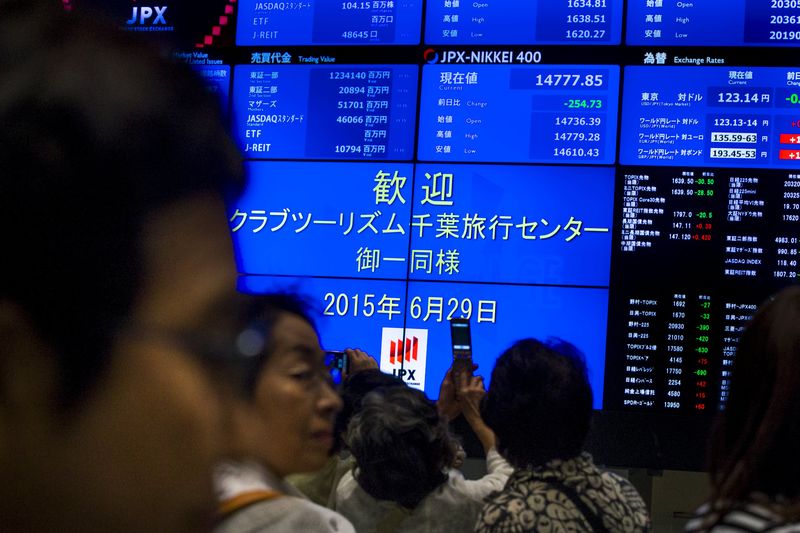Most Asian stocks rose on Wednesday, tracking a rally on Wall Street as investors cheered the prospect of early interest rate cuts by the Federal Reserve, while Chinese shares lagged on a bleak economic outlook.
A strong overnight finish on Wall Street- which put U.S. stock indexes within spitting distance of fresh record highs- showed that a post-Federal Reserve rally still had some legs, especially as investors remained convinced the central bank could begin trimming rates by as soon as March 2024.
This sentiment spilled over into Asian markets, helping regional bourses extend recent gains.
Australia’s ASX 200 index jumped 1.1% to its highest level since April 2022, while a rebound in video game stocks- particularly heavyweight Tencent Holdings Ltd (HK:0700)- saw Hong Kong’s Hang Seng index add 1.2%.
Futures for India’s Nifty 50 index pointed to a positive open, as the index remained in sight of record highs. The index was also among the top performing bourses in Asia for 2023, up nearly 18%.
Nikkei rallies on more dovish BOJ signals, top performer in 2023
Japan’s Nikkei 225 was among the top gainers for the day, up 1.1%. The index was also boosted by the summary of opinions of the Bank of Japan’s December meeting showing that members of the central bank saw monetary policy remaining ultra-loose for the time being.
A dovish BOJ and signs of some resilience in the Japanese economy saw local stocks stage a stellar rally this year. The Nikkei was the best-performing stock index in Asia through 2023, up 30% and also outperforming most of its global peers. In comparison, the S&P 500 was trading up about 24% for 2023.
Still, whether the Nikkei could extend its outperformance into 2024 remained in question, especially as the BOJ signaled that it will eventually begin tightening policy in the coming year. Japan’s economy also faces increasing headwinds from a slowdown in its biggest export markets, chiefly China.
Chinese stocks lag as economic outlook remains bleak
China’s Shanghai Shenzhen CSI 300 and Shanghai Composite indexes fell about 0.2% each on Wednesday, and remained close to annual lows as sentiment towards the country showed little signs of improving.
Data on Wednesday showed that Chinese industrial profits improved in November, but were still down 4.4% year-to-date.
A post-COVID economic rebound in China largely failed to materialize this year, as consumer spending worsened while foreign investors also slowed down capital investment in the country. This was exacerbated by Beijing taking a rather conservative stance towards rolling out more stimulus measures.
Chinese stocks were the worst performers in Asia for 2023, with the CSI 300 and Shanghai Composite down 14% and 6.3% for the year, respectively.
Markets were now awaiting purchasing managers index readings for December, due next week, for more cues on the Chinese economy. Official PMIs for November had pointed to further deterioration in activity, although private PMI data showed some improvement.



